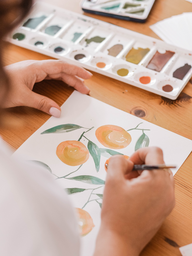The importance of imagination is all too often overlooked by adults, as popular culture encourages the practicality grind: study hard in college so you can make money and buy a house. So, why should we care about imagination?
The Stanford Encyclopedia of Philosophy states that “to imagine is to represent without aiming at things as they actually, presently, and subjectively are. One can use imagination to represent possibilities other than the actual, to represent times other than the present, and to represent perspectives other than one’s own.” Our brains have the ability to focus on the actuality of reality one moment and the imaginative realm that exists outside of our reality the next. What we imagine isn’t necessarily reality, but it is influenced by the reality of our past experiences. In this way, engaging in imagination can be a really satisfying reprieve from the chaos of reality.
Why not take a much-needed break from the reality grind and engage in your brain’s built-in fantasy realm? Virginia Woolf wisely wrote that “fiction is like a spider’s web, attached ever so slightly perhaps, but still attached to life at all four corners. Often the attachment is scarcely perceptible.” The fiction and fantasy of reality is a “web” we can imagine, though it is still grounded in the reality of “life at all four corners”, even if it is only “scarcely” so. Sometimes imagination is much more grounded and influenced by reality than one might think. And so expressing oneself artistically and imaginatively can be quite cathartic and stress-relieving, not to mention that getting lost in one’s imagination can be a ton of fun.
One way I like to express myself and let my imagination run wild is through speed drawing. An exercise I like to do goes as follows:
Set a timer for 30 seconds. Draw with oil pastels for 30 seconds on one page, and flip to a new page after every 30 second time period and begin a new 30-second creation.
The 30 second time frame does not allow room for critical thinking to clog your imagination and thus creates more space to just let your imagination flourish. It takes a while to shut off the critical thoughts, but once they shut off, the results might surprise you. It will probably take slightly longer than 10 minutes to complete 20 drawings, considering you will have to reset the timer multiple times, and that is absolutely okay. After roughly 10 minutes of 30-second drawings, you will have 20 abstractions from your imagination.

You can use pens, pencils, paint or another artistic medium for this exercise. I just prefer to use oil pastels because they fill up a page quickly, and the colorful pastels blend nicely on the page with one another. They are also permanent, so you can’t erase a stroke you make. You just have to work with what you put on the page and not look back. Not being able to erase the oil pastels enables me to shut my inner art critic off and let my imagination take the reins.
And remember, no one is a bad artist. Art is subjective, and some people love artwork that others hate. Your imagination takes what you know based on your experience and creates unique artwork out of it. So just enjoy what your imagination brings you and have fun. If you feel displeased with your 20 pieces of art after creating them, remind yourself that they are good enough because you put in the effort and expressed your unique imagination. Be proud of your artwork and what your imagination was able to come up with. That is more than enough. Have fun with your imagination and enjoy the fantasy!



